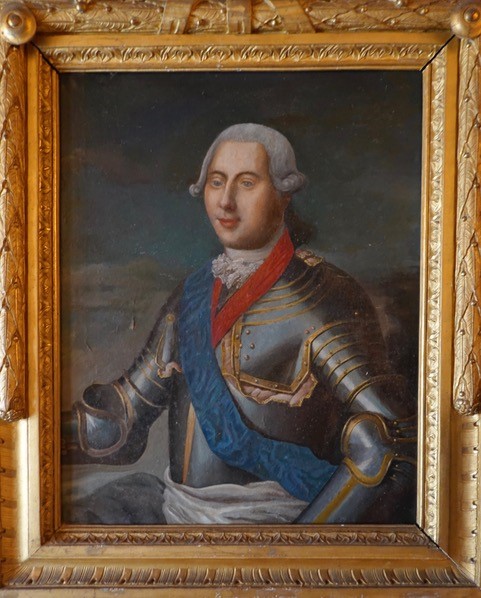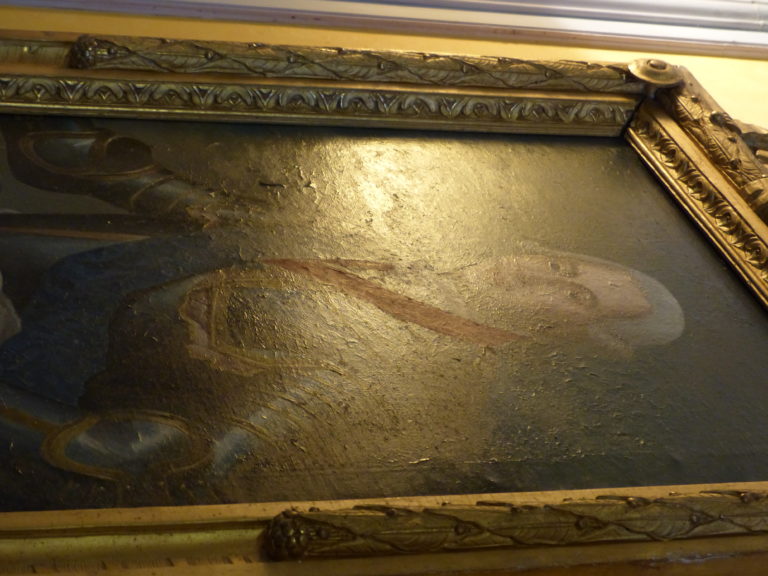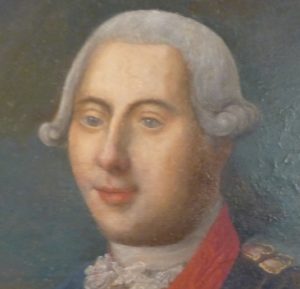Portrait of Dauphin of France, Van Loo Workshop, 18th century, Castle of St-Bonnet-Les-Oules, France
The conservation-restoration work is being done on a voluntary basis. The amount of the donations previously collected have been put together in a global fund for the three ongoing projects in order to be able to start the work on the three works.
Help us help them !
Financial cost of taking care of the work :

Identification
Item : Oil on canvas
Subject: Portrait of the Grand Dauphin Louis De France, father of Louis XVI
Technique : Oil
Nature of the support : Artisanal linen canvas on stretcher
Signature : unsigned – estimated Van Loo Workshop
Era : 18th century
Dimensions : 81 x 65 cm
Old Restoration interventions : yes
Place of conservation : Castle of Saint-Bonnet-les-Oules (42)
Owner : Madame de Rocquigny
Review date : March 09, 2020
Muses & A.R.T. was contacted by Ms de Rocquigny, owner of the castle of Saint Bonnet les Oules in Loire, France, about several paintings. In the large salon of the castle are six portraits, four of which come from the studio of Louis-Michel Van Loo. These last paintings, including the portrait of the Dauphin of France which is the subject of this file, were already present in the castle when it was purchased in 1782. They are part of the historic place.
The portrait depicts the Grand Dauphin Louis of France, son of Louis XV and father of Louis XVI, Louis XVIII and Charles X. This painting and the portrait of Louis XV were stolen in 1972. They were found and recognized by Father Galo, restorer in Saint-Etienne : he tried to restore the painting presented here, but the face of the Dauphin was completly modified.
CONDITION REPORT
Constituents examination
The support consists of a original handmade linen canvas in good condition, stretched on a rudimentary stetcher, fixed and not chamfered.
The pictorial layer consists of a white ground. The tests carried out indicate that the ground is rather oily. The original colored layer is almost entirely covered with abusive overpainting and is therefore inaccessible to examination.
Alterations examination
The colored layer presents alterations in adhesions and cohesion. These liftings can evolve into paint losses quickly if nothing is done at the conservatory level. We can clearly see in the photo opposite in low-angled light the lifts of pictorial material.
We can also see several gaps in the pictorial layer.
Many overpaintings are present throughout the work, made during the previous restoration. They were applied in particular on the whole face thus disfiguring it. Tests carried out on the edge of the work show that the overpaintings are easily reversible.
By adding excessive materials -fill and paint- the abusive work of restoration created tractions and caused the delaminations endangering this work.

TREATMENT PROPOSALS
Conservation operations
The pictorial layer of the work presents many loose paint. The first operation carried out on site consisted in facing the work with a paper and an adhesive resistant to mechanical stresses. This facing ensures its protection during transport and prevents the loss of pictorial material.
A global consolidation of the pictorial layer must then be carried out to strengthen its adhesion to the canvas support, flatten the cup-like formations and avoid any loss of material during the restoration work that will follow. The consolidation will be carried out with a heat-activated synthetic adhesive.
The cleaning of the canvas will allow the removal of grime and dirt-pocket that can, in the long run, attack the cellulose of the textile fibers.

Restauration operations
After cleaning tests, the old varnish will be lightened and removed at the same time as the overpaintings that are present on the majority of the surface of the work. Largely abusive, these overpaintings most likely cover a large part of the original colored layer. We therefore hope this operation will allow us to rediscover the true face of the Dauphin of France !
A fill-in medium will then be used in the lacunas to create a homogenous surface that will allow a clean and even surface for retouching and provide a continuity of structure with the pictorial layer surrounding these gaps. To be perfectly integrated, these fill-in will have to be shaped to imitate the original relief around.
This will be followed by the retouching, which consists of a colorful reintegration of the gaps. It allows the legibility of the work. It will most likely be substantial in view of the many overpaintings present on the work. The retouching will be illusionist, i.e. not discernible from the original colored layer.
A final varnish will then be set to protect the original colored layer and the retouches made. This final varnish has an aesthetic and protective role. Based on synthetic resin and gasoline, it will guarantee the work transparency and protection against environmental aggression.
